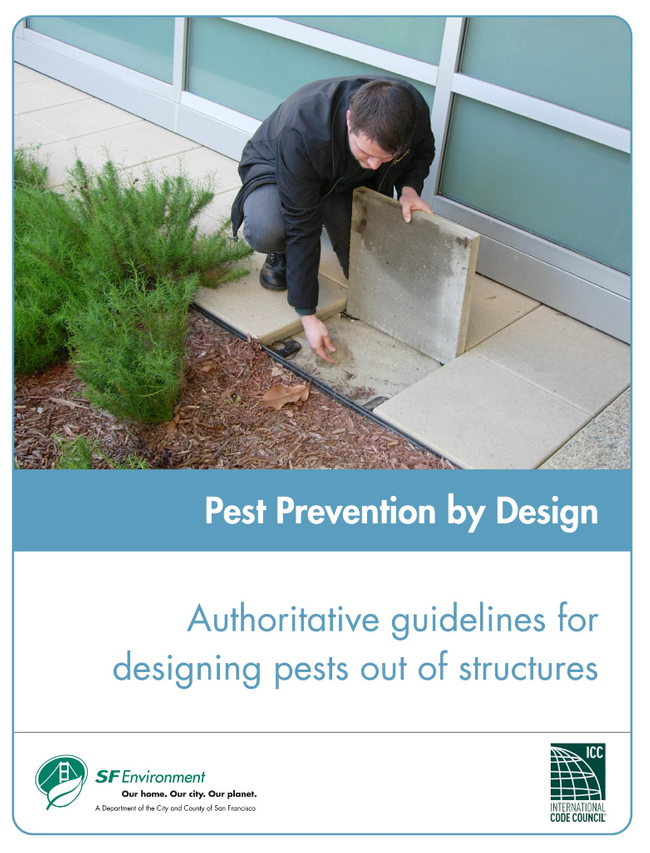One of the best ways to reduce pest problems in and around buildings is to construct or retrofit structures that keep pests out in the first place. This concept has been a pillar of integrated pest management for many years. Pest-resistant buildings reduce not only pest problems but also the need for pesticide applications. Unfortunately, architects and builders had few guidelines about how to design and construct such structures.
To address this issue, the San Francisco Department of the Environment and the International Code Council developed an online publication, Pest Prevention by Design, which provides the first comprehensive resource on pest-preventive building design tactics.

- Bird-resistant light fixtures
- Bird deterrents on light fixtures
- Bird exclusion devices
- Motion detectors on exterior lights
- Timers on exterior lights
- Reflected light rather than direct light
- Direct exterior lighting only for essential areas
- Yellow (sodium) exterior lights
All pest preventive design elements are based on minimizing entry of pests into buildings, making pest inspections easier, and eliminating or minimizing the food, water, and harborage vertebrate and invertebrate pests require for survival. These basic principles, which should be followed throughout all areas of building construction, include:
- Understanding local pest pressure
- Analyzing the physical context for each building situation
- Designing for the necessary pest tolerance level
- Using durable, pest-resistant materials
- Designing for easy inspection
- Minimizing moisture
- Sealing off openings
- Eliminating potential harborage sites
- Engineering slabs and foundations to minimize pest entry
- Designing buildings to be unattractive to pests
The guidelines were assembled as a database that can be updated over time but currently are distributed as a stand-alone document. The San Francisco Department of the Environment led the project, funded through a grant from the U.S. Centers for Disease Control and Prevention. The department assembled an advisory committee of experts from across the United States with expertise in pest control, architecture, engineering, green building, IPM, and public policy who searched literature, professional manuals and publications, and Web sites for information. All content went through a peer review process. The department plans to pilot test the guidelines in San Francisco housing developments and incorporate the guides into green building checklists such as Leadership in Energy and Environmental Design (LEED).
To download a free copy, visit the Department of the Environment's Web site, http://www.sfenvironment.org/download/pest-prevention-by-design-guidelines.
(Originally published in the February 2013 issue of UC IPM's Green Bulletin)